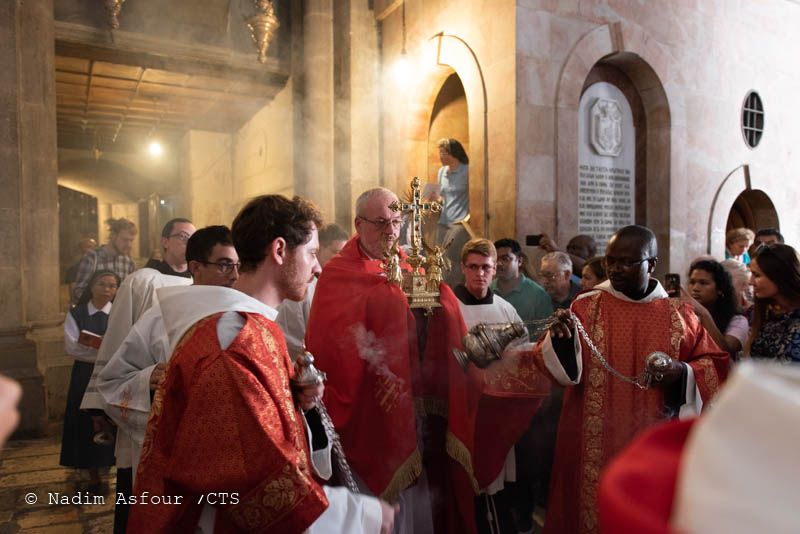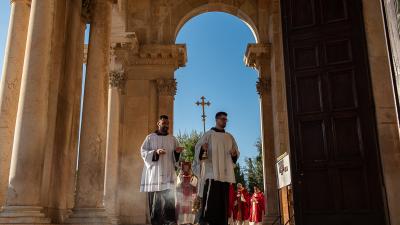
The celebration in Jerusalem for the solemnity of the Exaltation of the Holy Cross, which takes place every year on Calvary on September 14 takes on a very deep meaning. Having the privilege of participating in liturgies in the very places where [the biblical episodes] occurred, allows us to look at the events with a different type of awareness.
“Today is a day of joy and glory—joy, because the Son of God wanted to be with us in everything, to his death on this Calvary and glory, because death on the cross is the triumph of love brought freely to the extreme,” said the liturgy.
Br. Dobromir Jasztal, the Custodial Vicar, specified during his homily that Jesus on the cross tells us about God and bears witness to the Truth. The cross, an instrument of mockery and defeat par excellence, is redeemed thanks to him, because it becomes the necessary passage for the glory of the Resurrection. “The cross is weakness; it represents being defeated in the sense of allowing oneself to be trampled on and humiliated in order not to renounce loving and being truthful,” he explained.
Today's readings told us about an obedient Christ, who bends to the logic of the cross, strips himself of what he is in order to do the will of the Father. Christ lowered himself out of faithfulness but is then raised up: first on his cross and then to his Kingdom.
"It is necessary,” said Brother Dobromir, “for the mystery of the Cross to also become a precise criterion in our lives. it is also necessary that we, through our own faithfulness, lower ourselves so as to be lifted up like Jesus, entrusting ourselves to the Father as he entrusted himself, otherwise our faith may become sterile and superficial," he continued.
An emotional moment followed the Holy Mass: the traditional procession with the Relic of the Holy Cross toward the chapel of Mary Magdalene, where it was displayed, where the solemn blessing took place and where the faithful were able to the kiss the Relic. Numerous Franciscan friars, the nuns from various institutes and pilgrims came for the ceremony.
“I think it is very interesting to take part in these liturgies and listen to these songs that seem very old but that also include the changes brought about by the Second Vatican Council. This connection between two different ages becomes something very beautiful today,” said Benoît, a 28-year-old volunteer from France.
Giovanni Malaspina




